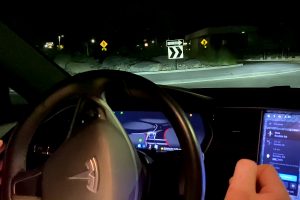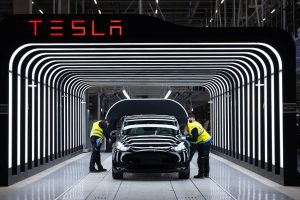Headed by Jeff Dahn, Tesla’s battery testing team in Canada is on the verge of proving groundbreaking battery capacity with a new, next-gen battery cell. The team released its findings in a new paper which shows how electrolyte solutions can counter anode-free cell failure.
The paper is titled “Diagnosing and correcting anode-free cell failure via electrolyte and morphological analysis.” Dahn and his research team at Dalhousie University show that some of the anode-free battery cells used appear to contain more energy per volume than conventional lithium-ion cells. This is key to expanding the electric car range.
Hansen Wang, a battery researcher at Stanford University, says the anode-free batteries are also lighter than conventional cells.
“The idea is to only use lithium on the cathode side to reduce weight,” Wang said in an interview with the prestigious Northern California school.
Nevertheless, certain downsides are present with the increased energy storage capacity. One fallback is that the cells “tend to experience rapid capacity loss and short cycle life,” the abstract paper says on Nature. There are also safety issues with anode-free cells, which relate to the metallic lithium inside.
Dahn and his team claimed that the anode-free cells are capable of increasing their lifespan by using a dual-salt carbonate electrolyte solution to counteract the degradation effects.
The team states:
“Recently, we demonstrated long-lifetime anode-free cells using a dual-salt carbonate electrolyte. Here we characterize the degradation of anode-free cells with this lean (2.6 g Ah−1) liquid electrolyte. We observe deterioration of the pristine lithium morphology using scanning electron microscopy and X-ray tomography, and diagnose the cause as electrolyte degradation and depletion using nuclear magnetic resonance spectroscopy and ultrasonic transmission mapping. For the safety characterization tests, we measure the cell temperature during nail penetration.”
Once Dahn’s team used the dual-salt carbonate electrolyte solution in battery cells, it showed that a dead lithium inactive mix forms large lithium columns inside the cell. It provides an outstanding morphology of lithium inside the cell which may overcome the problems of a short lifespan.
In the past, to increase the lifetime of a battery, Tesla invented an electrolyte solution that could be applied to the lithium-ion batteries.
The engineered electrolyte extended the lifespan of anode-free cells to 200 total cycles, which is a major change from other results. At Stanford University, for example, the previously mentioned experiment was conducted in June 2020. This experiment showed that 100 cycles were operated by anode-free battery cells until capacity fell to 80 percent.
The advances in the lifetime of battery cells ultimately lead to longer-lasting batteries in electric vehicles. Tesla has been working for an extended time on a million-mile capable battery cell which could be unveiled on September 22 at the company’s Battery Day event.
Energy density is the secret to expanding range, but there’s a fine line between endangering lifetime for more miles per charge. Ultimately, the work will start with Dahn’s team, and it’s a big improvement in terms of what previous research has shown.
You can find the “Diagnosing and correcting anode-free cell failure via electrolyte and morphological analysis” paper here.
Reported by Teslarati.
Want to buy a Tesla Model 3, Model Y, Model S, or Model X? Feel free to use my referral code to get some free Supercharging miles with your purchase: http://ts.la/guanyu3423
You can also get a $100 discount on Tesla Solar with that code. No pressure.





